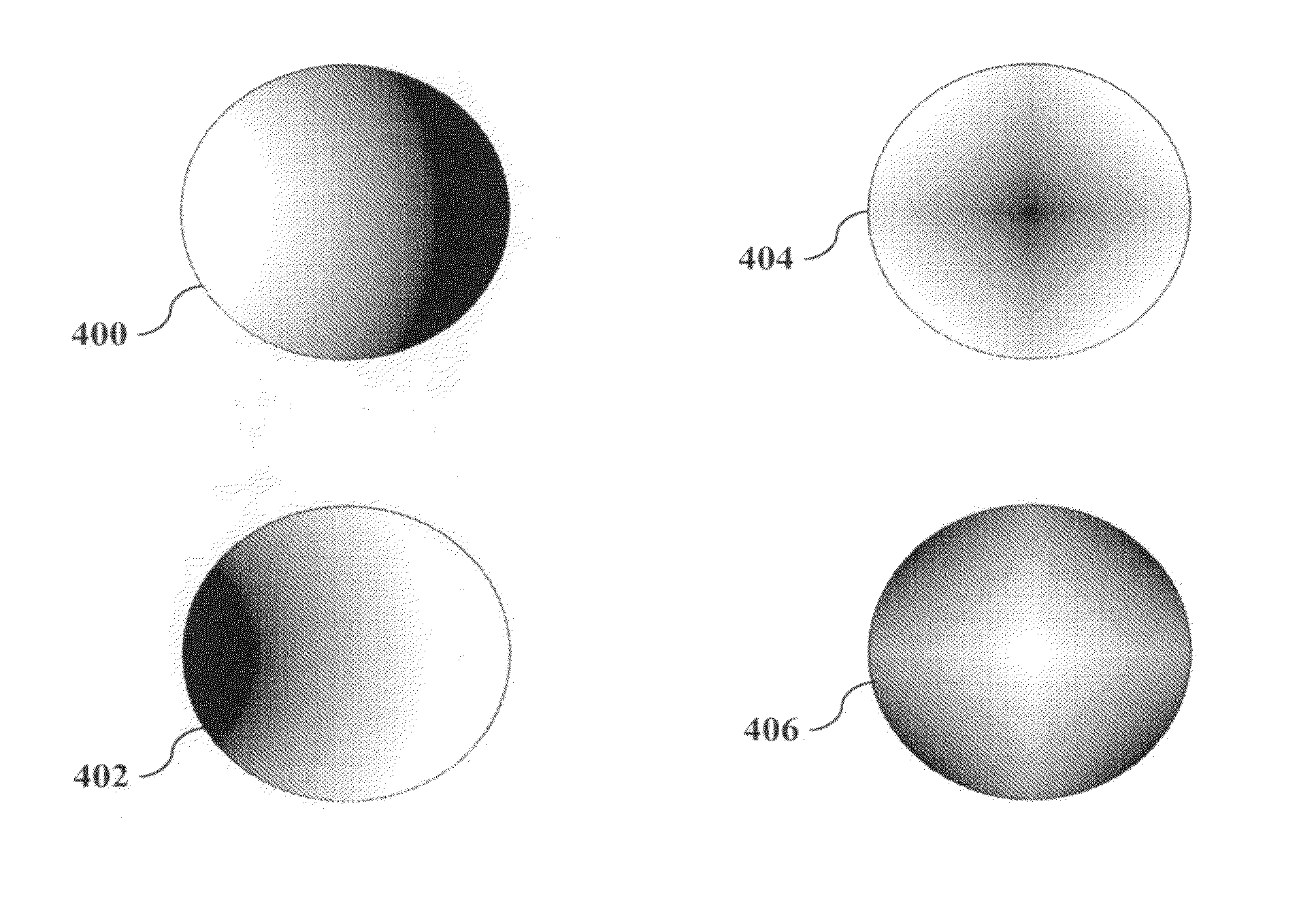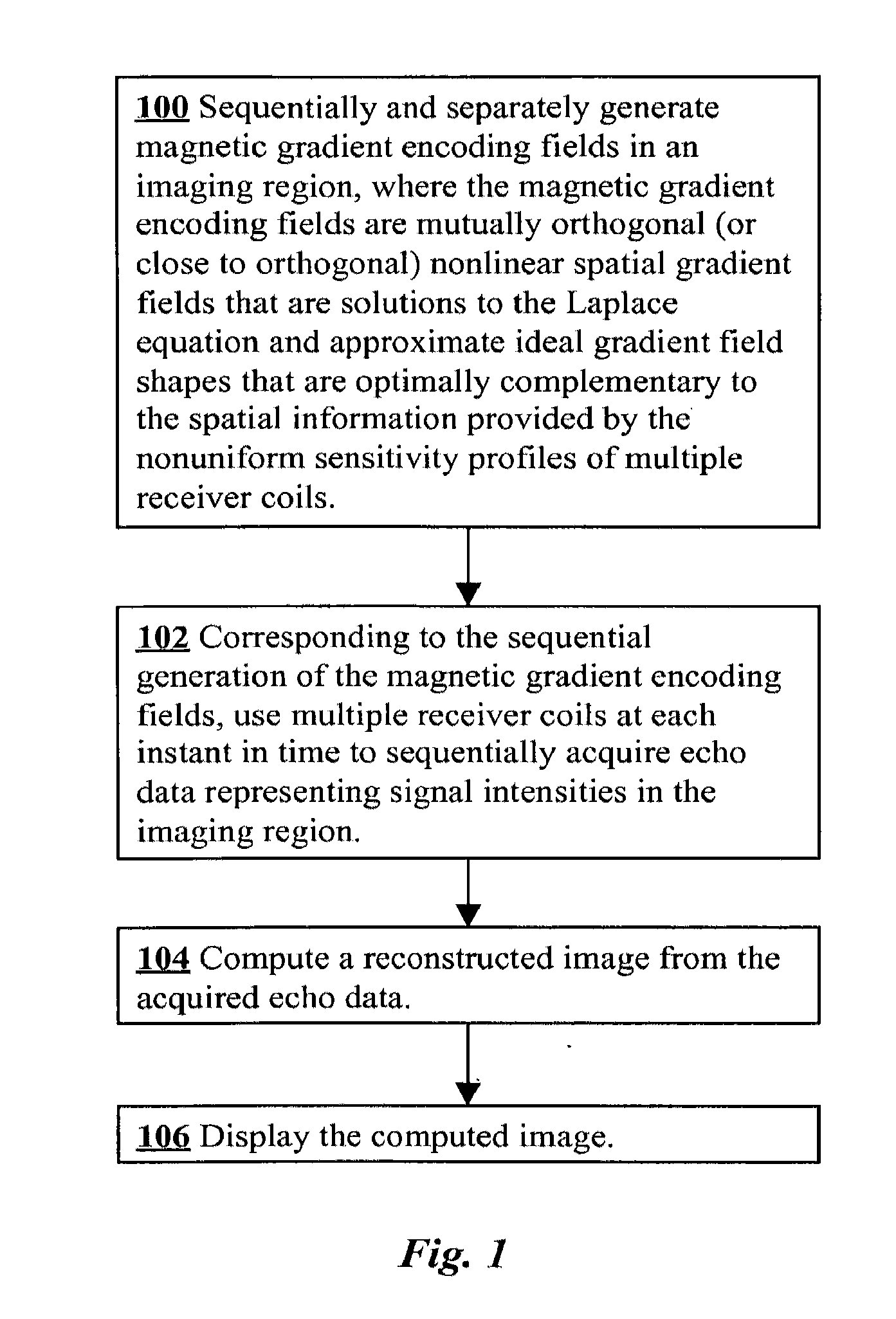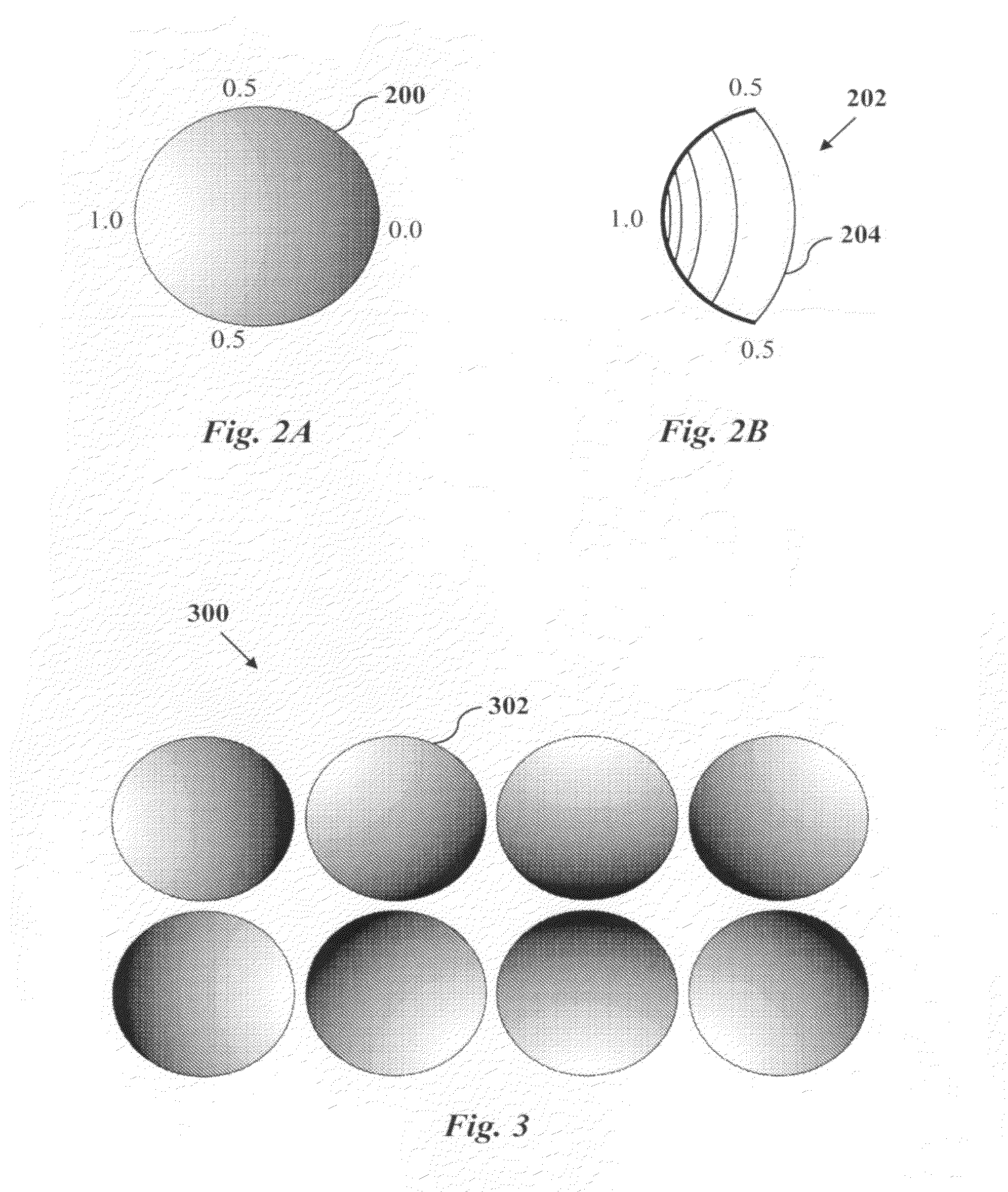Accelerated MRI with Nonlinear Spatial Encoding Gradients
a nonlinear spatial encoding and acceleration technology, applied in the field of parallel magnetic resonance imaging techniques, can solve problems such as waste of acquisition time, and achieve the effects of reducing scan times, high quality and high quality
- Summary
- Abstract
- Description
- Claims
- Application Information
AI Technical Summary
Benefits of technology
Problems solved by technology
Method used
Image
Examples
Embodiment Construction
[0021]MRI uses spatially-varying magnetic fields, termed gradients, in order to spatially localize signal. Fundamentally, imaging differs from spectroscopy through the use of gradients that assign different frequency codes to separate spatial regions in the area to be imaged. The Larmor precession equation states that the frequency of the RF signal is proportional to the magnetic field intensity. Much of the art involved in faster methods of image acquisition have focused on efficient methods and apparatuses to encode and localize signal with gradients. The approach of the present invention is to design the gradients to complement the performance of the receiver coils.
[0022]Conventional gradients use magnetic fields that increase linearly with position in x, y, or z directions. Some known gradient systems use orthogonal gradients that are nonlinear, but these have been designed through the principle of reducing magnetic field variation, without regard for receiver coil performance. ...
PUM
 Login to View More
Login to View More Abstract
Description
Claims
Application Information
 Login to View More
Login to View More - R&D
- Intellectual Property
- Life Sciences
- Materials
- Tech Scout
- Unparalleled Data Quality
- Higher Quality Content
- 60% Fewer Hallucinations
Browse by: Latest US Patents, China's latest patents, Technical Efficacy Thesaurus, Application Domain, Technology Topic, Popular Technical Reports.
© 2025 PatSnap. All rights reserved.Legal|Privacy policy|Modern Slavery Act Transparency Statement|Sitemap|About US| Contact US: help@patsnap.com



